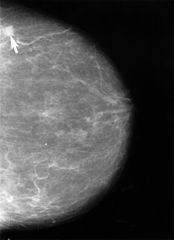
30 Jun How Beneficial is Digital Mammography?
MedicalResearch.com Interview with:
Rachel Farber, MPH
School of Public Health
Faculty of Medicine and Health
University of Sydney
New South Wales, Australia
MedicalResearch.com: What is the background for this study?
Response: Most breast screening programs worldwide have replaced the use of film mammography with digital mammography. While digital mammography provides significant technical and practical advantages over film mammography in the provision of population screening programs, the effect of this move on health outcomes remained unclear.
An increase in screen detected cancer rates is only beneficial if the additional cancers detected would have otherwise presented at a later stage and caused morbidity and premature mortality. An indirect measure of this is an observed decrease in interval cancer rates. Interval cancers are cancers that are diagnosed after a woman has a negative screening result and before her subsequent scheduled screening.
MedicalResearch.com: What are the main findings?
Response: Overall the systematic review showed there has been a modest increase in screen detected cancers with the transition from film to digital mammography screening and an increase in false positives, but this did not translate into a reduction in the interval cancer rate.
MedicalResearch.com: What should readers take away from your report?
Response: While the transition from film to digital mammography may have been for technological reasons, it seems unlikely to have translated into a beneficial effect for screening participants. It is critical to carefully consider the effect changes in technology can have on benefits and harms, and to ensure that new technologies are not adding harm with little benefit.
MedicalResearch.com: What recommendations do you have for future research as a result of this work?
Response: This study highlights the importance of carefully considering the effect a new technology has on intermediate and long term benefits and harms. Currently, tomosynthesis (3D mammography) and other imaging technologies are proposed for adoption in population screening in many countries worldwide. The existing evidence indicates that tomosynthesis improves initial screen detection measures (cancer detection and/or recall rates); however, new research in tomosynthesis screening should focus on evaluating both the short term and the intermediate to long-term outcomes, including effect on interval cancer rates.
Citation:
Rachel Farber, MPH, Nehmat Houssami, PhD, Sally Wortley, PhD, Gemma Jacklyn, PhD, Michael L Marinovich, PhD, Kevin McGeechan, PhD, Alexandra Barratt, PhD, Katy Bell, PhD, Impact of Full-Field Digital Mammography versus Film-Screen Mammography in Population Screening: a Meta-analysis, JNCI: Journal of the National Cancer Institute, , djaa080, https://doi.org/10.1093/jnci/djaa080
JOIN OUR EMAIL LIST
[mailpoet_form id="5"]We respect your privacy and will never share your details.
Last Modified: [last-modified]
The information on MedicalResearch.com is provided for educational purposes only, and is in no way intended to diagnose, cure, or treat any medical or other condition. Always seek the advice of your physician or other qualified health and ask your doctor any questions you may have regarding a medical condition. In addition to all other limitations and disclaimers in this agreement, service provider and its third party providers disclaim any liability or loss in connection with the content provided on this website.
Last Updated on June 30, 2020 by Marie Benz MD FAAD
